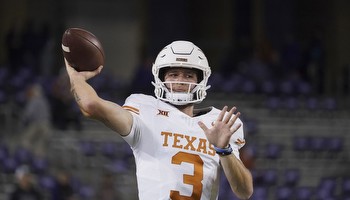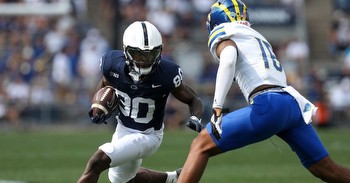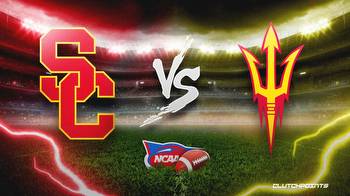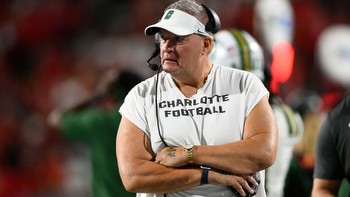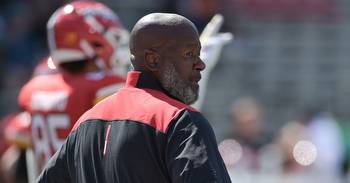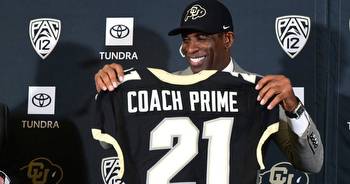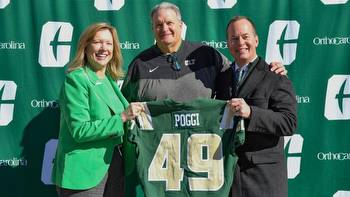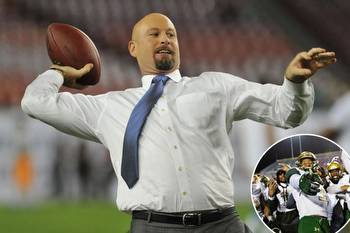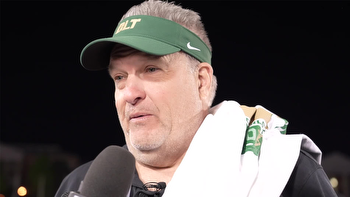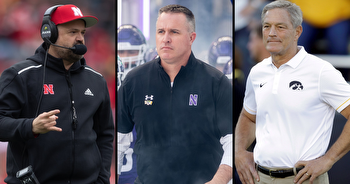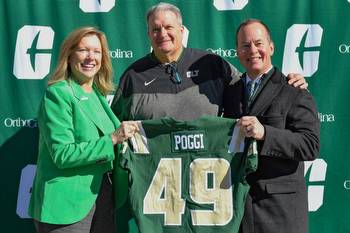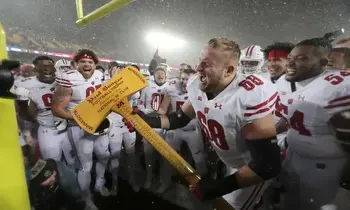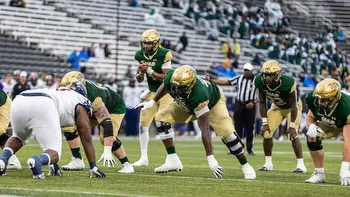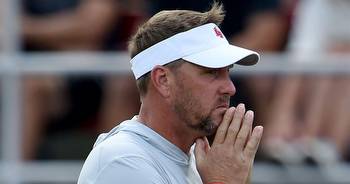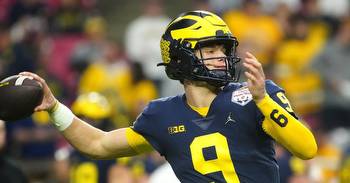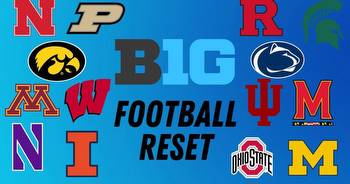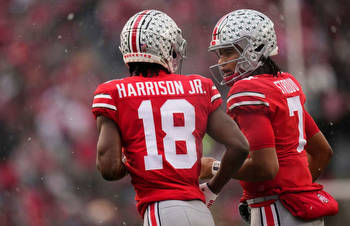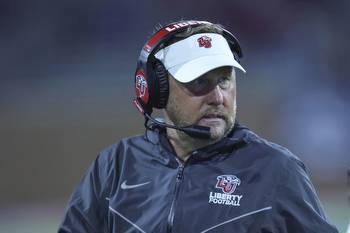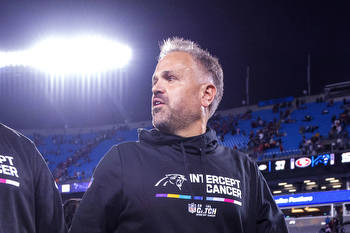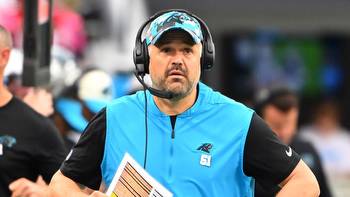CC Biz Buzz: Transfer portal shows college football coaches like CEOs

Four NCAA Division I Football Bowl Subdivision programs are being led into the 2023 season by first-time head coaches as their CEOs: Ryan Walters (Purdue), Biff Poggi (Charlotte), Kenny Dillingham (Arizona State) and Trent Dilfer (UAB).
Walters, 37, is a name already known to sports fans in Columbia, Missouri, due to his time on staff at Mizzou. Walters went a traditional route as a graduate assistant for three seasons at FBS programs, position coach for three seasons, and defensive coordinator for seven years, including 2016-20 at Missouri, before taking the reins at Purdue.
Poggi, 63, has navigated an unusual journey. He spent 30 years managing a hedge fund, during which he also began coaching football, first at The Citadel followed by 27 years at a private high school near Baltimore where he won 13 state titles. Poggi later funded another prep program with his own money and built it into a national powerhouse that became the subject of an HBO documentary. Poggi served as associate head coach at Michigan for three years before taking over at Charlotte.
Dillingham, 32, is the youngest CEO of a Division I FBS program. Dillingham got his start in coaching at his high school alma mater, followed by a meteoric rise as an offensive analyst at Arizona State for two seasons followed by three seasons at Memphis, going from a graduate assistant coach to offensive coordinator in just three seasons. He was the offensive coordinator at Auburn for one season, Florida State for two seasons and Oregon for one season before taking the head job at Arizona State.
Dilfer, 51, spent 14 seasons as an NFL quarterback followed by 10 years as an analyst for ESPN and ABC. Dilfer’s first and only coaching opportunity prior to taking charge at UAB came at the high school level as head football coach at Lipscomb Academy in Nashville, Tennessee, for four seasons, which included three trips to the state finals and two state championships.
Like any new CEO of a large organization, these new head coaches have spent a better part of their first eight months establishing a new culture. Culture can be presented in a lot of ways, but essentially the CEOs must define what is encouraged or discouraged in their program. They have to ensure the personal values of their players and recruits collectively align with that culture.
As management guru Peter Drucker’s famous quote states, “Culture eats strategy for breakfast.” Any CEO can put together a strategy to expand their organization’s share of their market, just like coaches are putting together a strategy to win games. However, if the strategy the CEO is trying to put in place doesn’t align with the culture or vice versa, the odds are bleak that the new coaches will be successful at what they are measured on by the public and their respective universities – winning.
While college football student-athletes are not employees of their programs, they are active in their program nearly year-round, similar to a full-time employee for an organization. Players put in time to develop themselves and in turn perform better. In return for the work that is put in, most are receiving some level of scholarship – not to mention Name, Image and Likeness (NIL) deals, which we will address in the September 2023 CC Biz Buzz column. Similarly, employees for organizations are putting in the work in return for pay, with many trying to develop themselves further professionally to advance.
Regardless of whether they are athletes in an FBS program or employees in a private organization, “employee turnover” is something every CEO has to deal with in some fashion. The NCAA transfer portal, established during the COVID-19 pandemic, allows football players to transfer to another institution without losing a season of eligibility. Over 1,200 players at the Division I level have entered the portal since August 2022 and joined another program. An argument against the portal is it goes against the ideal of commitment. However, a positive is that it makes two things easier for coaches: Players who don’t align with a new culture can leave at will for another program, and good players who are searching for a new program and do align with a culture can enroll with much more ease.
In a study completed by the Pew Research Center in 2022, the top three reasons U.S. workers left jobs in 2021 include “pay was too low,” “no opportunities for advancement” and “felt disrespected at work.” These reasons directly correlate to why players in FBS programs decide to enter the portal.
The Society for Human Resource Management estimates that an organization spends three times a position’s salary to replace an employee. For every player who enters the transfer portal, the coaching staff has to develop a pool of new talent to replace that player and recruit the players in that pool with the hope of several prospects signing letters of intent. Then the staff and all other applicable university personnel must allocate time so that the student-athlete has what is needed to be successful.
There are three significant time frames in which most players for FBS programs enter the transfer portal when there is a CEO change like in the four programs being discussed: 1) beginning of fall camp to the day prior to the new CEO announcement; 2) day of the CEO announcement to the spring game; and 3) the days following the spring game and into the summer.
The first time frame, spanning from fall camp 2022 until the respective new CEO announcements, resulted in four players entering the portal from Purdue, two from Arizona State, one from UAB and none from Charlotte, according to 247Sports. When players leave at this point it usually has more to do with the past CEO’s culture for the program and the player’s thoughts on where he fits in.
The second time frame spanned the new CEO’s hiring in the winter until 2023 spring practice. The new CEO is busy assembling a new staff, meeting with current players and taking over recruiting of future players. This is a crucial time to determine who aligns with the new culture. Arizona State led with 19 players entering the portal, but about 30 transferring to Arizona State during this time frame. Purdue saw 11 players transfer prior to its spring game, with an equal number transferring to Purdue. Charlotte had 11 players enter the portal during this time period, but 13 players transferred in. The least amount of action occurred at UAB, which had four players leave and four transfer in prior to its spring game.
The third and final time frame comes after the spring game. After Purdue players saw where they fit in during a scrimmage, about a dozen entered the portal. No new players have transferred to Purdue since then. Nine Arizona State players entered the portal after the spring game, with two newcomers transferring in. Charlotte also saw nine players enter the portal after the spring game, with two transferring in. UAB saw seven players enter the portal after its spring game, with two transferring in.
What can we conclude from the transfer portal action for these four programs? A super majority of players wait to learn the new CEO’s strategy – and their place in that strategy and the future of the program – before they determine to transfer. However, for every player who transfers out, there is a player who likely has the same or better ability waiting to take his place. Players who transfer into a program can see if the new CEO’s culture aligns with who they are.
Jonathon Moberly, J.D., is the new dean of the Columbia College Robert W. Plaster School of Business. Moberly has more than 16 years of experience in higher education after working for five years in the sports business industry representing professional athletes.
